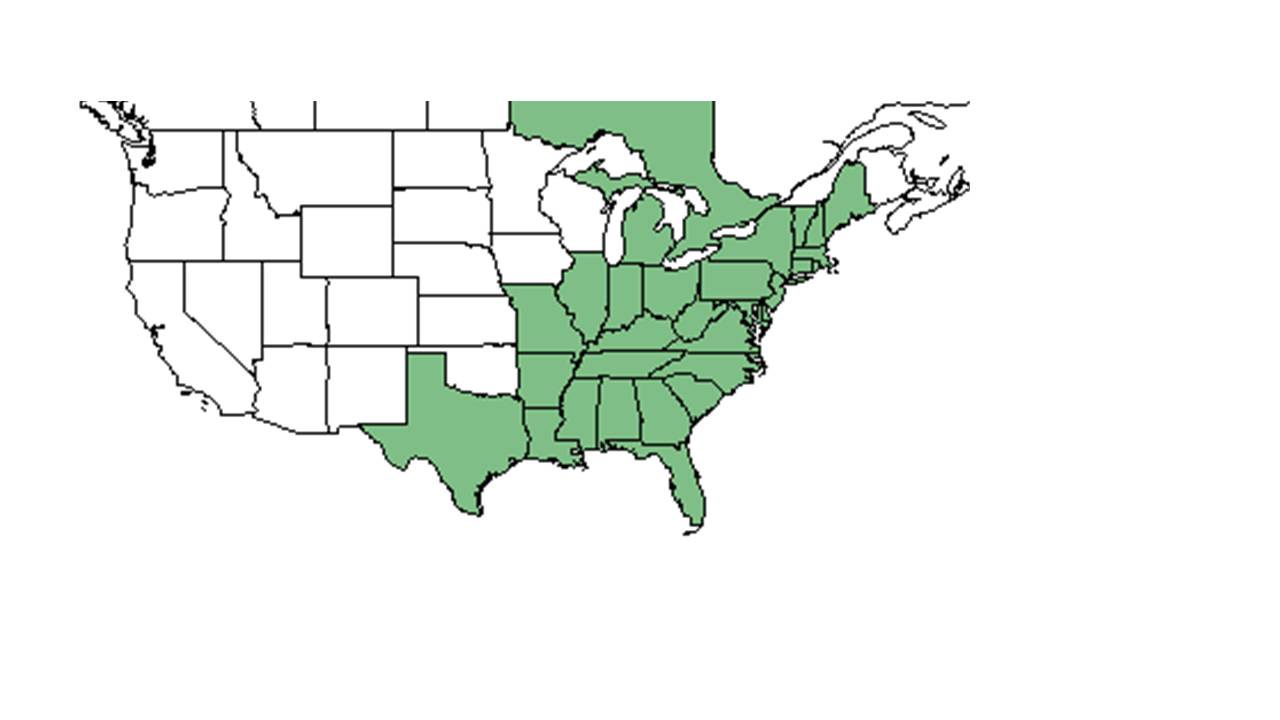Aureolaria flava
| Aureolaria flava | |
|---|---|

| |
| Photo was taken by Gil Nelson | |
| Scientific classification | |
| Kingdom: | Plantae |
| Division: | Magnoliophyta - Flowering plants |
| Class: | Magnoliopsida - Dicotyledons |
| Order: | Scrophulariales |
| Family: | Scrophulariaceae |
| Genus: | Aureolaria |
| Species: | A. flava |
| Binomial name | |
| Aureolaria flava (L.) Farw. | |

| |
| Natural range of Aureolaria flava from USDA NRCS Plants Database. | |
Common name: Smooth Yellow False Foxglove
Contents
Taxonomic notes
Synonyms: A. flava var. flava (Linnaeus) Farwell; A. flava (Linnaeus) Farwell var. macrantha Pennell; Gerardia flava Linnaeus var. flava; Gerardia flava var. reticulata (Rafinesque) Cory; A. flava ssp. typica Pennell; A. flava ssp. flava; A. flava ssp. reticulata (Rafinesque) Pennell; Gerardia flava Linnaeus var. macrantha (Pennell) Fernald; A. flava ssp. macrantha Pennell; A. flava ssp. flava
Description
In the genus Aureolaria, the plants are either annual or perennial. They are parasitic on the roots of Quercus (oaks) and they turn black when dried. The cauline leaves are opposite or subopposite. The flowers are showy, the calyx is 5-parted, the lobes are shorter to longer than the tube. The corolla is yellow in color, bilabiate, and 5-parted. The tube is campanulate and the lobes are spreading. There are 4 stamens, didynamous, included, filaments are flattened, and the 2 longer more or less lanose. The anther sacs are basally awned. The stigma is capitate and exserted.[1]
Specifically for A. flava, the plant is perennial and parasitic on Quercus alba (white oaks). The stem are glabrous and grow to approximately 2 or more meters. The leaves are lanceolate or elliptic lanceolate, the upper portion is usually entire or serrate, the lower portion is usually pinnately lobed to parted, glabrous or glabrate, and grows to approximately 7-17 cm long and 1.5-7 cm wide. The inflorescences, the pedicels are glabrous, are 4-25 mm long at the anthesis, curving upward. The calyx lobes are lanceolate to triangular, equaling or slightly longer than the tubes which are entire, and are 3-5 mm long. The corolla is 3-5 cm long. The capsules are glabrous. Flowers from August to September; and September to October.[1]
Distribution
Ecology
This species is a hemiparasitic plant. It uses specialized roots called haustoria that attach to the roots of hosts to transport sugars and proteins. Since it is a hemiparasitic plant, it still has green tissues and preforms photosynthesis. Quercus species are one of the major host plants[2].
Habitat
Habitats include cliffs, balds, ledges, ridges, pine-oak woods and loamy sand in oak-hickory on upper slopes of steepheads in shaded areas. It also can be found in areas of human disturbance such as on the edges of trails and slopes of impoundments[3]. This species is a hemiparasitic plant which often times uses species of Quercus as its host[4].
Phenology
The yellow flowers are bisexual, weakly bilaterally symmetrical and have a superior ovary. Flowering occurs summer through fall. The fruit is a capsule.[5]
Pollination
Pollinated by bumblebees[6].
Conservation and management
Cultivation and restoration
Photo Gallery
References and notes
- ↑ 1.0 1.1 Radford, Albert E., Harry E. Ahles, and C. Ritchie Bell. Manual of the Vascular Flora of the Carolinas. 1964, 1968. The University of North Carolina Press. 957-8. Print.
- ↑ [[1]]Go Botany. Accessed: April 1, 2016
- ↑ Florida State University Robert K. Godfrey Herbarium database. URL: http://herbarium.bio.fsu.edu. Last accessed: June 2014. Collectors: L. C. Anderson, B. Boothe, M. Boothe, V. Craig, R. K. Godfrey, H. Roth, and R.A. Norris. States and Counties: Florida: Gadsden, Leon, and Liberty.
- ↑ Belofsky, G., M. D. Bowers, et al. (1989). "Iridoid glycosides of Aureolaria flava and their sequestration by Euphydryas phaeton butterflies." Phytochemistry 28(6): 1601-1604
- ↑ [[2]]Name That Plant. Accessed: April 1, 2016
- ↑ [[3]]Native Florida Wildflowers. Accessed: April 1, 2016